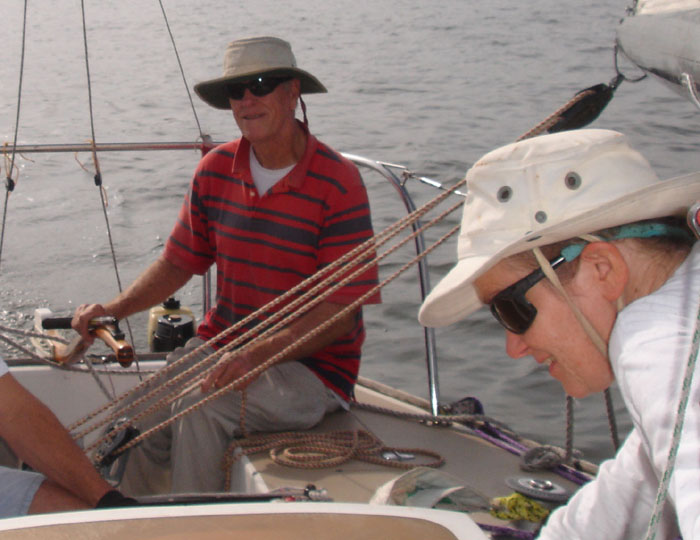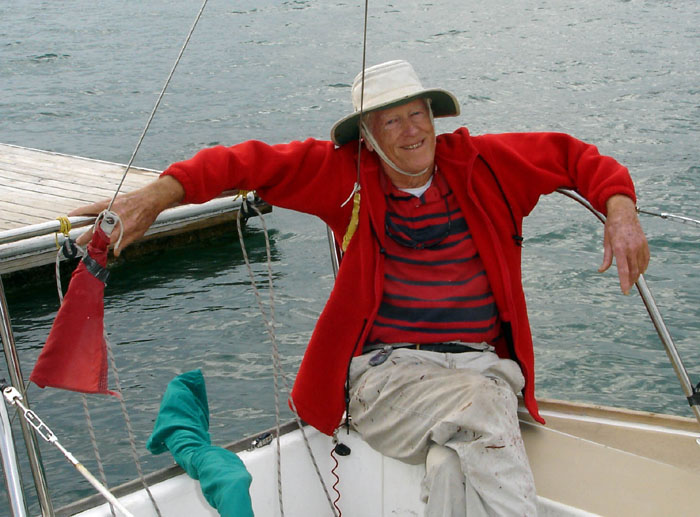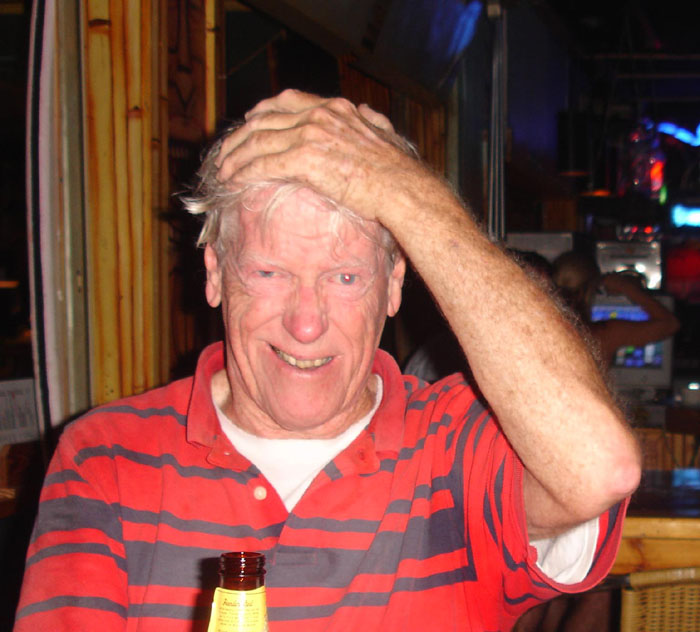|
A story of commitment to the sport of
Sailing
|
|
| Just a reminder - we have come a long way in a
very short period of time. We will continue making mistakes - and continue to find ways to avoid the mistakes. Like golf, the boats that make the fewest mistakes win races and regattas. Sometimes we are lucky, and sometimes, unlucky. That is all part of sailing. We have gotten to a point where we can get around the course, and we have learned a few tricks for doing things better. Remember, we also need to learn how to not do bad things. Bad things usually occur because we are not thinking ahead. That means we are not looking to see if we are ready for the next maneuver, or we are not prepared for the potential conditions. Let me give an example - we broached one time this weekend. What could have been done to prevent this from happening. Well, my belief was that we were all caught off guard. We got hit by a big puff which was a lift, that caused the boat to heel excessively, and once the round up started there was nothing that could be done to flatten the boat except to blow the spinnaker sheet. So what could have been done. If I had been ready, I would have immediately borne off to soak up the lift by heading at the mark at a higher speed. When the crew feels the puff hit or knows that it will hit because they saw it coming, they should all go to the windward side quickly, to ensure the boat is maintained flat. If we are on a reach there is a higher possibility of a broach and everyone should be on the rail. If we are going deep downwind, there is a possibility of a gybe broach, and everyone needs to be ready to go to leeward and the pole needs to be ready to go forward. This is crew awareness of the possibility of changing conditions. Remember, anything that causes the boat to not stay flat, will cause me to steer and go slower. By the way, we could also have blown the vang, to ease the load on the rig. Of note: while we were going downwind the wind was providing significant shifts. One minute we would be almost dead downwind, and the next, we would be on a reach. Almost without exception, the wind would go way forward on a puff, and the boat would heel over as the pole was moved forward. This is a case where the crew needs to be very active in controlling the boat attitude. When you hear that the pole is being moved, you need to be thinking about moving weight to keep the boat flat. Also, having someone with their hand on the vang. Here is an interview with Charlie Ogletree, Olympian - He makes a point that is important to keep in mind. How does your friendship influence your abilities as a team? Do you think you have an advantage because of it? It's a big advantage. We've seen everything. We've screwed up everything you can screw up. We used to get mad and yell at each other. But now we're calmer and we know how to deal with adversity. It's like in golf you have 18 holes and if Tiger screws up one hole he knows how to move on. In sailing you have ten or 11 races. If you sail one bad race you can forget about it and move on. It is all about how we work as a team. It is the team that accomplishes the goals and fixes the mistakes. We focus on Team success and that is what determines how we finish. Nothing is ever ideal, but collectively, we can get closer to ideal than a bunch of people working independently. We have our individual jobs, and we try to help wherever possible to enable a fast boat with minimal mistakes. Then the challenge becomes, how to train ourselves to minimize the errors, how to spot errors before they become an impact, and how to correct the errors most rapidly when they are not caught. The top boats work on all aspects of error avoidance and correction. Errors happen. Some errors are more important or have a greater impact than others. We need to make sure that the priorities are properly established. We were under attack a couple of times this last weekend. One thing that we need to keep in mind is that when the pole goes forward to the headstay, the pole tip needs to come down, otherwise we will be sliding sideways. The pole tip down, moves the draft of the spinnaker forward (providing more drive) and opens up the leach (reducing leeward sliding). We have learned a lot in the last year, and we have it retained in a fragmented form. The big job is getting it folded together into an integrated set of responses. If someone says we are going to be attacked we know what all of the requirements are for the attack and recovery. It is possible to gain in both parts of the attack, going up and bearing off. If someone chooses to engage in a tacking duel, we know what is most important in acquiring success. If it is a gybing duel, or any other confrontation, we know what the full set of actions is to gain success. This is the year of integrating these actions and getting our heads outside the boat. Practice, practice, practice. If you have questions on any part of a maneuver, or sequence of maneuvers to gain success, please ask. We need to keep all of this on the table, so it can be discussed at the drop of a hat. If there are things going on, out on the course, that you don't understand - ask!!! Dick |
|

|
|

